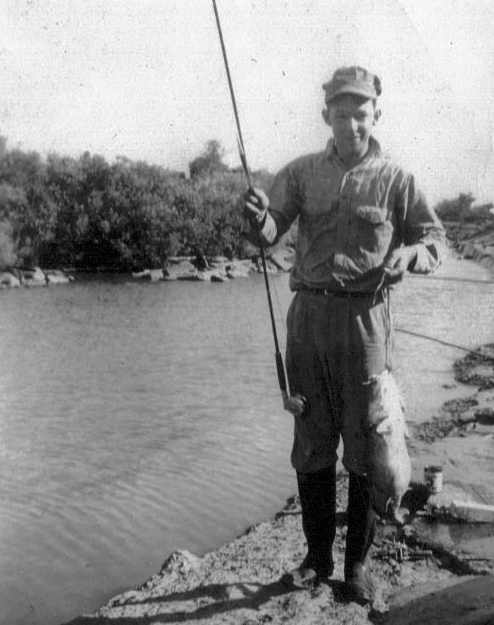My grandfather always thought it was absurd that people bought water in plastic bottles. That someone would go to the store and pay for something that comes out of the kitchen sink, throw it away and do it again absolutely blew his mind. Even worse he thought, were all the plastic water bottles people didn’t throw away – the ones he regularly found at the places he hunted and fished.

No, he wasn’t an environmental activist. He was an insurance claims adjuster from a small town in the Midwest who rarely had anything at all to say about politics or activism. Instead, his perspective likely came partially from that common generational reluctance to embrace a different way of doing things. He was from the canteen generation. But his perspective was also greatly influenced by living through the Great Depression, when most folks simply couldn’t afford not to reuse everything.
My grandfather’s approach to the simple task of taking water into the woods was born purely out of necessity and common sense. Now there’s a whole lot of data that says he was right for reasons he knew at the time and for reasons he couldn’t possibly have foreseen: the overflowing landfills, the wasted oil, the wasted energy, the leaking toxins, the impact on wildlife and the mountains of plastic waste that end up in our streams, rivers, lakes and oceans.

However, my intent is not to write a detailed article on the specific detrimental impacts of single use plastics. There are an overwhelming number of articles and studies on the topic already. If you are unfamiliar with the problem or don’t believe there is a problem, I recommend taking a little time to research.
When it comes to fishing trips, I have always used reusable containers to carry my water. When I was a kid, I used a canteen like my grandfather did. In more recent years, I’ve been using hydration bladders or stainless steel water bottles. The choices today are vast from simple, inexpensive containers to those heavy, high dollar Yetis that will keep ice for days. As with any other piece of fly fishing gear, you just have to find what works best for you. All are better alternatives than buying water in single use plastic bottles.
Partly because I do consider myself an environmentalist and probably more because of the influence of my grandfather, I try to reduce waste as much as possible, whether it’s water bottles or anything else. If you have ever had one of my guide trip lunches, I provide real forks and cloth napkins not to be fancy (as some have commented), but because they are reusable. Lunches are also packed in reusable containers. There are a few things in the lunches that need to be wrapped either for practicality or sanitary reasons, but I’m proud to say the only thing that gets thrown away from one of my lunches is two pieces of cling wrap!
The fact is it would be way easier to pick up a boxed lunch full of disposable containers, paper napkins and plastic utensils and just throw it away at the end of the day. One of my least favorite things to do at the end of every day is to go home and clean all the lunch containers. Yes, it is WAY more work but to me, it is worth it.
I’m not trying to preach here or act superior because I produce less waste. I’ve used my share of disposable containers and I have certainly succumbed to the convenience of a single use plastic water bottle. After all, we do live in a world of convenience and sometimes you just don’t have a choice. But sometimes with just a little more effort, you do.
For years, while carrying my personal water in reusable containers on guide trips, I provided single use water bottles for clients. Yes, those water bottles were recycled after use but there are a lot of questions about the viability of recycling single use water bottles. I have always wanted to eliminate those plastic bottles altogether from my guide trips but thought I didn’t have a choice. It turns out I do. Much like my lunches, it will require a lot more work (and a little more expense) on my end, but like the lunches, I think it’s worth it.

Effective immediately, I will no longer be providing plastic water bottles on guided fishing trips. Instead, I am encouraging each client to provide his or her own reusable container for water. Many of my clients do this already. For anyone who does not have their own water/container, I will provide aluminum bottles of water. These bottles will be cleaned thoroughly at the end of each trip and reused for future trips.
Sure this will cost me a little more money and it will definitely be more work, but it’s worth it. As someone once told me, “I may not be able to make this world any better, but I sure as hell don’t have to make it worse!”

